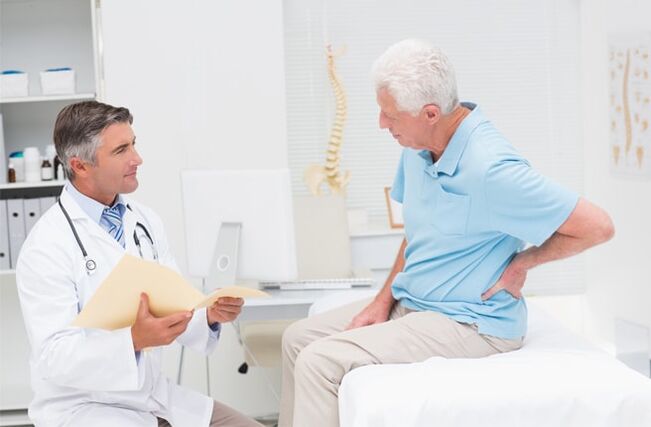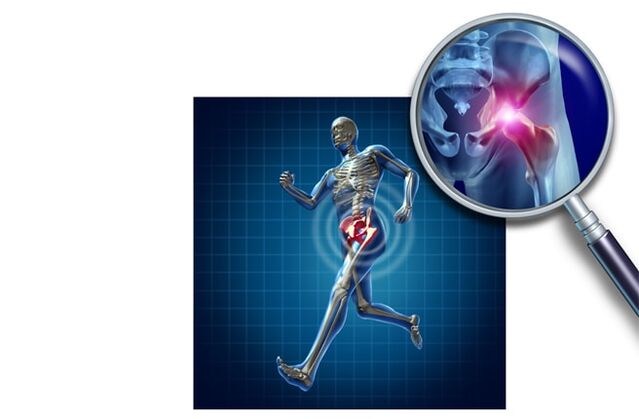Arthrosis (osteoarthritis or deformed osteoarthritis (DOA), or deformity of arthrosis) is a joint disease, in which the articular cartilage is affected at an early stage, then the surrounding muscles, ligaments, nerves, and bone tissue are included in the pathological process.

Arthrosis is a disease that develops for a variety of reasons. These include metabolic disorders, trauma, intoxication, etc.
Patients usually refer to "arthrosis" as a joint disease in which pain, limitation of movement and other discomfort in the area of one or more joints are observed, which is not always the case. Osteoarthritis and related pain develop as a result of "aging" of the joints, due to the influence of various negative factors, however, the cause of joint pain can be infection and injury, and in this case we are talking about other pathologies.
Statistics of arthrosis
Up to 70% of patients at the reception of general physicians, therapists, neurologists, surgeons, rheumatologists complain of joint pain. Often this is pain in the lower back and in large joint areas (knees, hips). Worldwide, up to 70% of cases of long -term disability are due to osteoarthritis. Quite a few patients - up to 10% of those who seek help from a doctor due to further arthrosis have a disability and need constant help. Arthrosis is one of the main reasons for a person’s premature departure from a full social life; in statistics, it is second only to coronary heart disease.
The likelihood of arthrosis increases with age: in people over 50 years, it occurs in 27% of cases, in people over 70 years, the prevalence is 97%, which is due to the cumulative age -related burden on the joints andthe end of their normal function.

Causes and developments
The main factor in the development of arthrosis is a lack of nutrients in the articular cartilage, which leads to its destruction. It doesn’t really matter why this happens (overweight, professional sports, work habits, hormonal disorders, congenital defects in the joints, etc. ), the results are the same:
- changes begin in the articular cartilage causing loss of elasticity; microcracks appear on the thickness of the cartilage;
- blood supply to the joints is disrupted, joint fluid production decreases, joint mechanics change;
- then all joint structures, adjacent muscles, nerve endings are involved.
The listed degenerative disorders lead to the development of symptoms of arthrosis, and the disease "begins" at a time when constant mechanical load becomes a ban for the joint (or joints) and begins the process of its destruction.
Symptoms of arthrosis
Unlike other joint pathologies, arthrosis develops over many years, is long-term and invisible to humans. By the time the body signals a problem in the joint with severe pain, the pathological process in it has already begun.
Pain is the main symptom of arthrosis (osteoarthritis), in the early stages of the pain is not so noticeable, weak, more comparable to discomfort. Unpleasant sensations in the joints that arise after the load disappears on its own, without medical intervention or medications, but they quickly become noticeable and limit the movement of ordinary people.
Pain can also occur at rest or at the beginning of a movement (called "onset"), for example, in the morning after sleep or after sitting for a long time during the day in one position, passing during movement. Resting pain at night is also a feature of arthrosis, which also rapidly decreases with the onset of physical activity. Patients with joint problems usually say that to get rid of discomfort it is necessary to "stretch the bones", "develop the joints", which, in general, describes this condition accurately.
Painful sensations arise not only because of disturbances in the work of the joint itself. When all the components of the joints, muscles and nerve endings are involved in the process, the pain becomes varied and painful: "shooting" along the nerve, spreading through the muscle. Blood supply to joints, nerves, muscles is disrupted, degenerative changes occur rapidly in them.
Temporary or permanent joint movement limitations (contractures) develop due to serious pathological changes in articular and muscle tissues. For example, with arthrosis of the hip joint, the limbs are shortened, the pelvis is "tilted" and the spinal space is curved.

Cramps in the joints in the early stages are almost invisible, but as the disease develops during movement, it becomes persistent. These symptoms psychologically worry patients with arthrosis even more than pain, as this indicates a serious disorder, aging of the body and the musculoskeletal system in particular.
In later stages of arthrosis, joint deformation occurs, which is associated with loss of all articular surfaces with curvature, bone growth, decreased amount of articular fluid, and joint subluxation.
Level
Depending on the severity of the symptoms, several stages of osteoarthritis are distinguished.
In the first stage, pain at rest and with moderate exercise is absent, appears only after high loads (fitness, carrying heavy loads, running) or after a long static position. One does not experience restrictions and difficulties in movement. No need for drug treatment.
In the second stage, the pain is pronounced and persistent, quickly arising under the influence of provoking factors (walking, physical activity), does not disappear by itself. Patients are limited in movement, limited movement of certain joints - knees, hips and others. Medical help is needed, treatment regimens must be prescribed, including drug and non -drug methods.
In the third stage, the patient moves with difficulty, requires constant treatment, the pain is very painful. As a rule, to restore quality of life, surgical treatment (endoprosthetics) and massive physiotherapy are required.
Symptoms of osteoarthritis appear at a young age, and in this case it is not necessary to ignore it, but to see a doctor. Timely treatment will support normal joint function and help prevent the rapid progression of the disease.

























